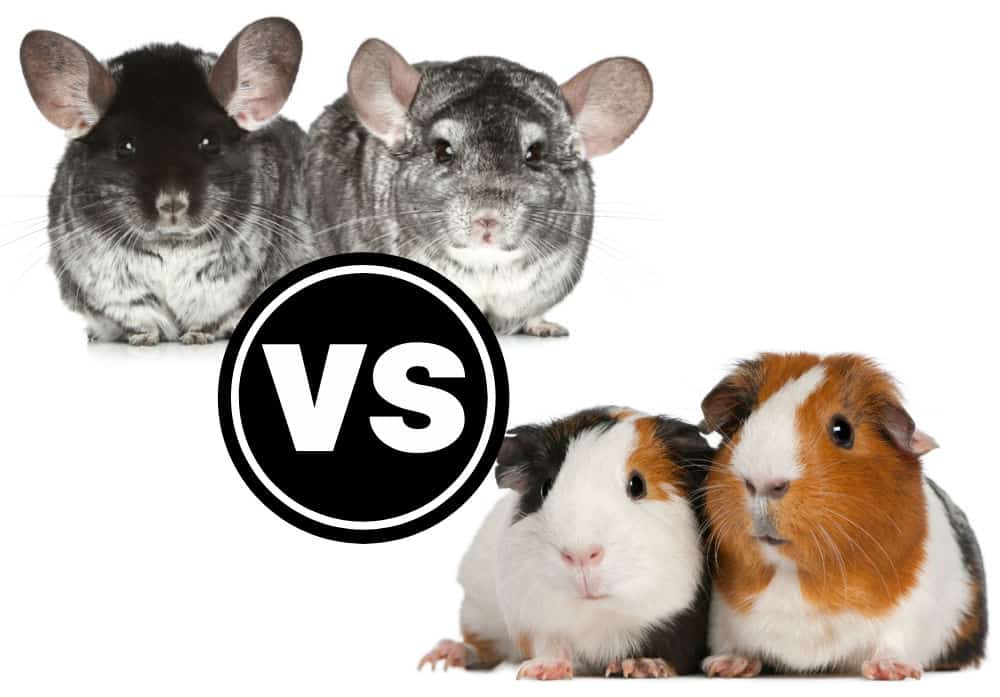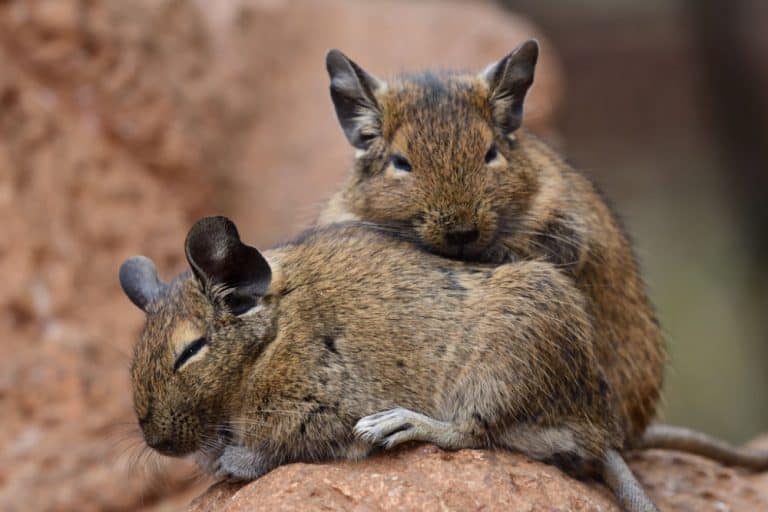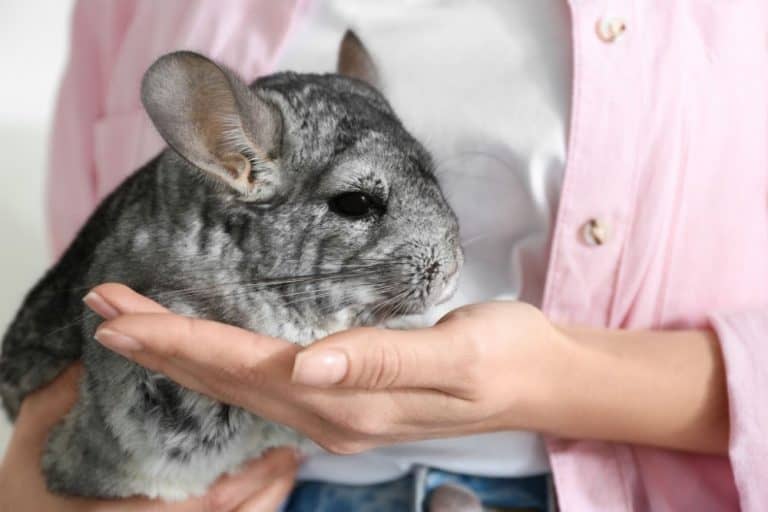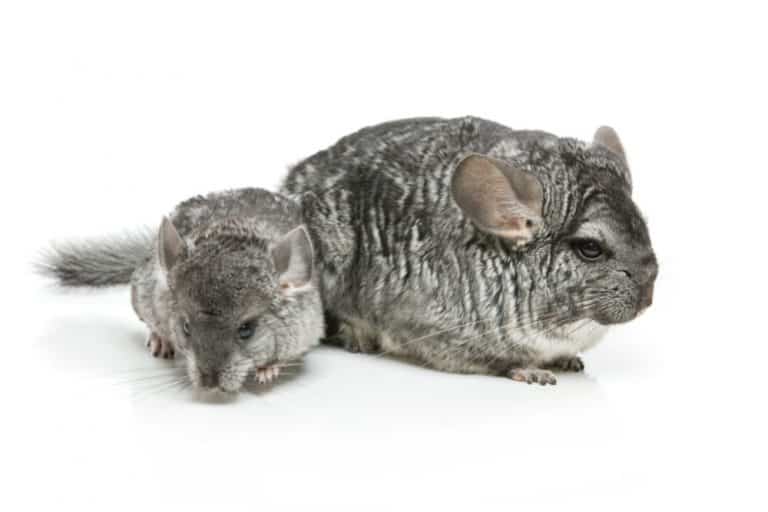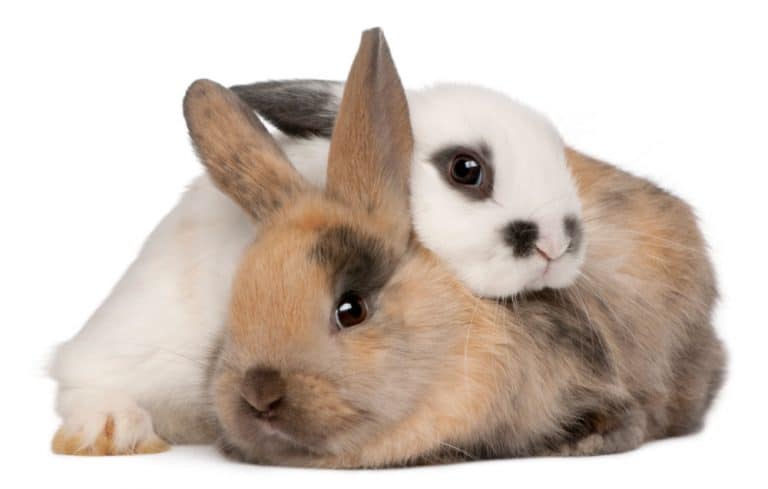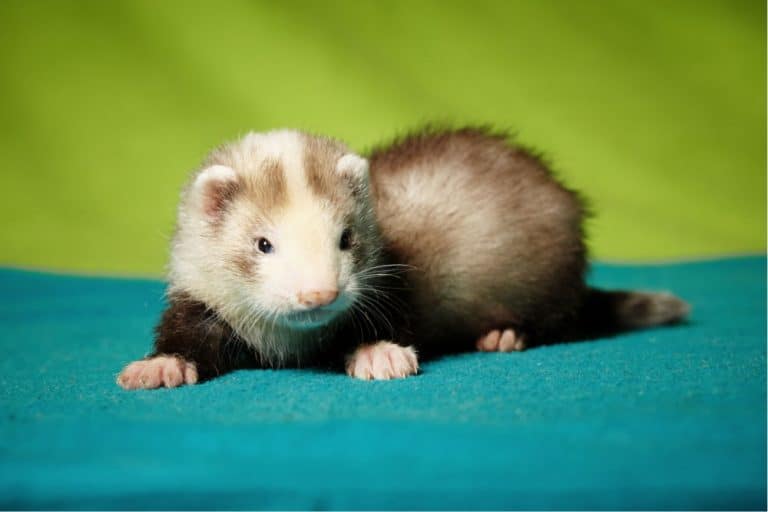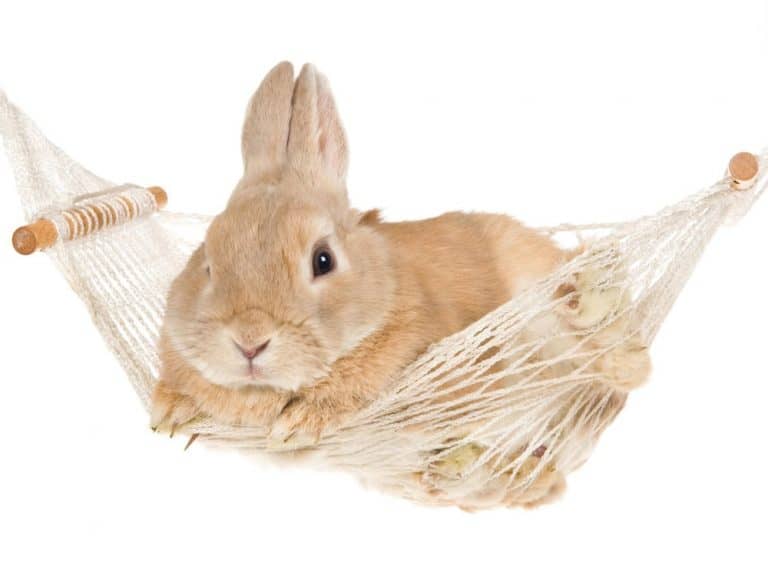Chinchilla vs. Guinea Pig: What’s The Difference
One of the most popular small pets is the guinea pig. They are easy to take care of and make the cutest noises. Most people even have a little experience with these pets, whether in their home, as a child, or class pet. They are an excellent beginner pet.
But you might be on the search for a little more challenging pets to care for, like the chinchilla. If you want a chinchilla and have experience with guineas, you are in the right place. Today we are going to talk about the chinchilla vs. guinea pig: what’s the difference?
Main Differences
One big difference between chinchillas vs guinea pigs is their temperament. Chinchillas are curious little puffballs. They explore everything around them and have a docile nature. They are also an energetic bunch who loves to get into mischief occasionally.
Guinea pigs are also a very tame pet. They might not seem to get into the trouble chinchillas find themselves in. But they are a very social pet, and they all have a unique personality of their own. When free-roaming, they will follow you around, and they definitely know you are their source of food.
Both of these pets are rodents from South America and make great pets. But guineas ran throughout the lower, more tropical areas of the Andes Mountains. In contrast, the chinchilla comes from the arid tops of the Andes Mountains. Can you imagine walking through the forest and seeing one of these adorable creatures? It’s no wonder people kept them as pets.
You can’t find the variety that makes our beloved pets out in the wild anymore. But they were a sight! Guineas were kept as pets by the Inca, and they had the right idea. Natives used chinchillas as fur pelts, which grabbed the attention of traders worldwide. But since these times, they have adapted and transformed into the pets we know and love today.
This fundamental difference changes everything from coat type to size and diet. Both of these pets had to adapt to their environments, which makes them completely different. But before we go into everything that makes them different, let’s talk about each’s advantages and disadvantages.
Which Makes A Better Pet?
When looking at the chinchilla vs guinea pig, anyone can see that both are fantastic pets. Both of them are reasonably easy to care for and make great pets for children. But that doesn’t mean every lifestyle is fit for them. It is essential to consider the pet’s pros and cons before investing.
Every pet has things that everyone loves and could live without. These pros and cons are parts of the pet that you can’t change. Some of them are minor inconveniences or significant problems. It all depends on your lifestyle and what you can adjust to. Let’s take a look at a few.
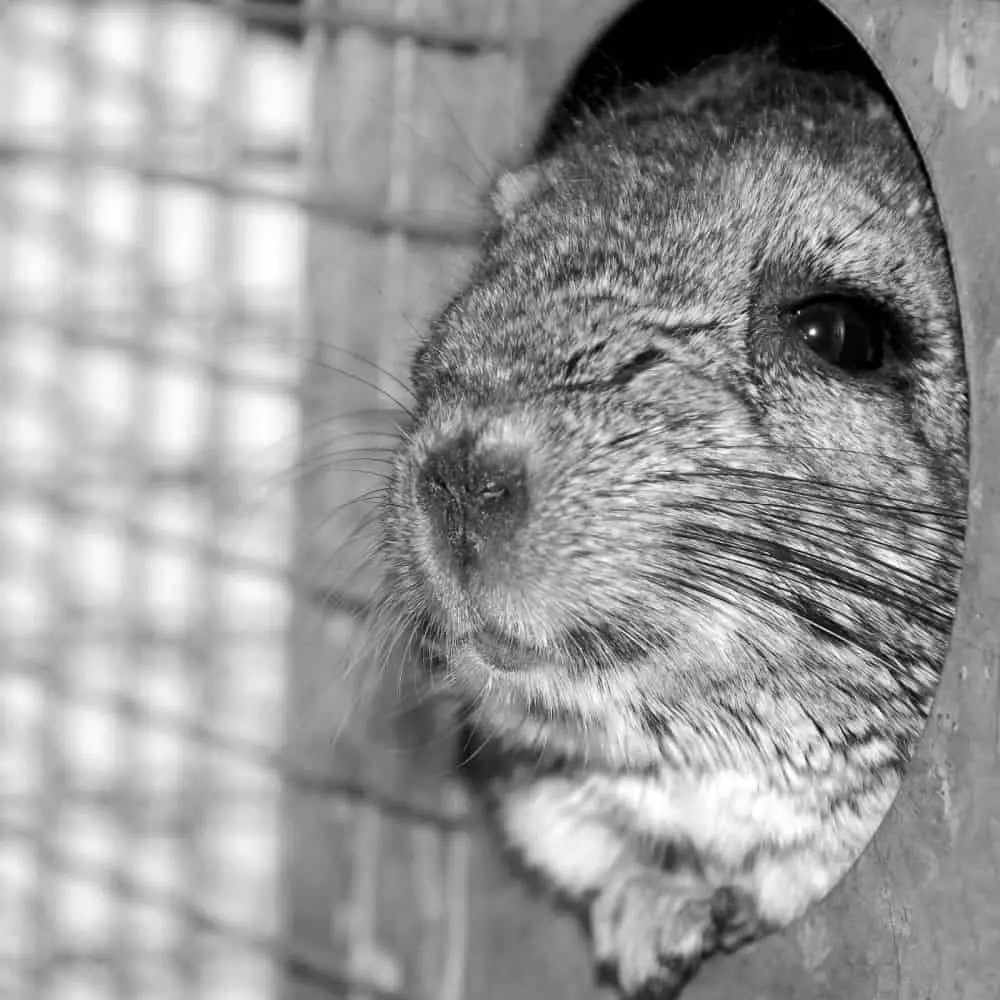
Pros Of Owning Chinchillas:
- No Smell – The best part of owning chinchillas is that they don’t smell. With regular cleaning, you might even forget that you have pets in the home. And who doesn’t love having pets without the farmyard smells?
- Friends – Chinchillas do just as well alone as they do with friends. It all depends on how much interaction you have with them. So if you only want one chin to cut back on a few costs, this is easily manageable with the right playtime.
- Lifespan – The average lifespan of a chinchilla is ten years. But it’s not uncommon that they live much longer than that. With the proper care and diet, your chinchilla could live to be almost 20.
- No Grooming – If you are accustomed to dogs and cats, you might understand the importance of grooming. But with chinchillas, there is virtually no grooming involved. All that a chinchilla requires is a dust bath a few times a week.
Cons Of Owning Chinchillas:
- Expensive – Standard grey chinchillas cost $150 on average. But more elaborate morphs can be up to $600. When you combine this with expensive start-up costs, many people will look for cheaper pets.
- Sensitive Stomachs – One thing everyone should be cautious of is that chinchillas have sensitive stomachs. There are many treats and woods in chain pet stores that are toxic to your chin. So you will have to be very careful about what you get them. Most people don’t have viable options for treats and toys, and therefore have to resort to online shops.
- Temperature – If your climate gets above 75 and you don’t have AC, you might want to reconsider chinchillas. Chinchillas are the most comfortable in temperatures ranging from 68-71 degrees. Anything above that for too long could result in heat strokes.
- Tall Cages – And finally, chinchillas don’t live in small cages. The typical chinchilla cage is at least three feet tall and sometimes taller. Having a larger cage is not compromisable. Your chinchilla does best when it can run and jump to stretch their legs. And since most of them spend all their time in a cage, you might need to go larger.
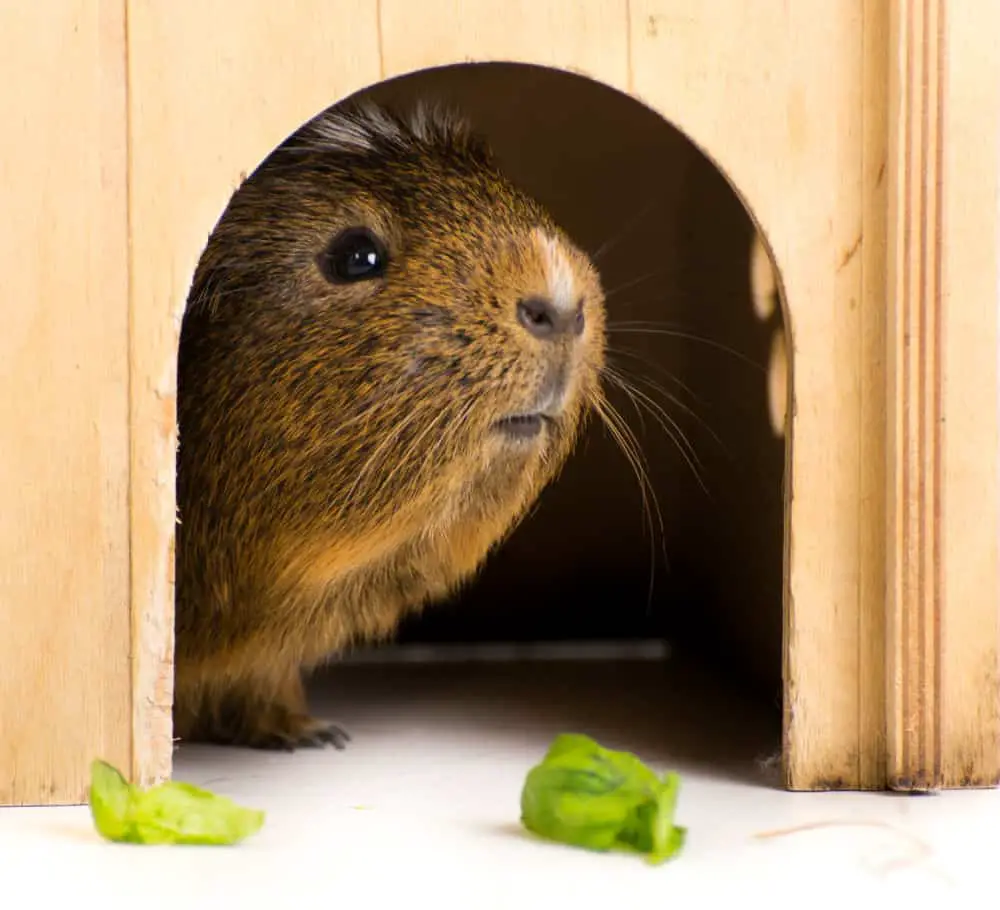
Pros Of Owning A Guinea Pig:
- Herding – Guinea pigs are the most fun when in groups. They are social creatures who need friends of their own kind. A single guinea pig will bond to people, but they show their true form with their herds. Having several guineas are fun and incredible to play with.
- Easy Diet – Unlike chinchillas, guineas don’t have a sensitive stomach and love most of the same fruits and veggies we like. With a healthy dose of fresh produce, pellets, and hay feeding your guineas are simple.
- Better For Kids – If you have smaller children, guinea pigs might be the best option. Guinea pigs are stronger and sturdy and hold up better to the noise and chaos of smaller children. However, it would be best if you never left your kids alone with pets to prevent accidents.
- Long Life – Guineas can live anywhere from 4-8 years with proper care. That is great for people who want small animals but hate how short of a life they have. While this might not be as long as chinchillas, it is still a long time for such a small creature.
Cons Of Owning Guinea Pigs:
- Smell – The biggest complaint that most owners have about guinea pigs is the smell. Guinea urine has a very distinct smell to it. After even a day, your guineas might start to smell. While there are ways to combat this, there will always be some odor.
- Friends – We said that a pro of having guinea pigs is that they can be in groups. But it can also be a con depending on how you view it. It means that you will spend more on food and supplies. It also means you need a larger cage to keep your pigs happy.
- Vitamin C Deficiency – While guineas are easy to feed, there is one aspect that needs special attention. Guinea pigs don’t produce vitamin C as other animals do, so they are more susceptible to scurvy. Feeding fresh produce high in vitamin C is a must to combat this.
- Long And Wide Cage – If you thought that having a guinea pig means you won’t have a large cage, think again. Guineas need a surprisingly large amount of space. A guinea pig cage is longer and not as many levels, but it can take up a large amount of space, the more piggies you have.
Pros Of Both:
- Color Morphs – Both the chinchilla and the guinea pig come in many different colors. You can even get them in other hair types. Some guineas have cowlicks or long hair, and some chinchillas have curly hair. There is no end to the possibilities here. And it is not easy to choose only one type.
- Easy To Clean – No matter which pet you choose, both of them are easy to clean. This is especially true since both of them can be litter trained to save on time.
- Common – One of the best things about these pets is that you can find them everywhere. No matter if you are looking for a pedigree breeder, adoption, or buying from a pet store, it’s not difficult to find.
- Cute Factor – Let’s not forget that no matter which pet you get, they are both cute beyond belief.
Cons Of Both:
- Long Commitment – Long lifespans are great for kids and adults alike. But long lifespans also equals a long commitment. If you aren’t sure if you will always want a pet, having one that easily lives 20 years isn’t the best option. That’s a long time to house, feed, care, and entertain a family pet.
- Vet Costs – While neither of these pets is uncommon, it is still expensive to take them to the vet. Both of these pets need a specialty vet that is knowledgeable about them and their needs. Unfortunately, though, these vets are not cheap.
- Not Cuddly – Chinnies and piggies love a good chin scratch. And occasionally they will come to sleep near you. But neither one of them goes out of their way to seek affection. If you were hoping for a pet that loves kisses and cuddles, neither of these are for you.
- Chewing – And finally, be prepared for everything to get chewed on. Chinchillas and guinea pigs are rodents with continuously growing teeth. To prevent their teeth from getting too long, rodents grind them down on wood. But they aren’t picky. These guys will chew on anything in their sight. No furniture, flooring, walls, or cords are safe.
Basic Care
Now that we have an idea of what it’s like to own a chinchilla vs guinea pig let’s dive deeper. In this section, we will talk about everything you need to know about chinchillas and guinea pigs. Specifically, what you need for their basic care and how they are different. You might even find that there are quite a few similarities between the two.
Cage
Before getting your pet, you should evaluate their cage needs. Both the chinny and piggie spend most of their lives in a cage. So you need to be careful that their cage is adequate. If you have ever been to the pet store and seen the cute little starter kits for guineas or baby chinchillas, you are going to be in for a shocker.
Those little houses are not suitable for your new family member. They are a gimmick to make a quick buck off unknowing pet parents. Luckily, when you get your pet, you will know what to look for.
Chinchillas and guinea pigs both need a wire cage with a solid bottom. And since both of them are super chewers, it shouldn’t be made from flimsy plastic. But it should also be easy to clean and have easy access.
We mentioned above that one chinchilla vs guinea pig difference is their cage type. Chinchillas need a taller cage with multiple stories to keep them happy. Remember they come from the mountains where they jump all day. So having shelves and things to jump on satisfies their need for height.
The ideal cage size for a chinchilla is at least three feet tall and two feet wide. You need to have an additional two square feet of space per chinchilla added for multiple chinchillas. Many chinchilla owners prefer to get a Double Ferret Nation for their babies. These cages are large enough to house their chinchillas comfortably.
Chinchillas also need to be kept in cooler conditions. Having a thermometer and hygrometer next to the cage will help keep an eye on the room. Like we mentioned before, the ideal temperature is 68-71, but they can withstand much colder temperatures.
Heat is where things get touchy for chinchillas. If the room is hot and humid, your chinchilla is at risk of heatstroke.
By contrast, guinea pigs need a cage 3 feet long and at least 18 inches wide per pig. While this doesn’t seem like much, you do have to figure that you need at least two. For one pair, you will need a cage 6 feet long. This cage is difficult to find but easy to make. And you don’t have to worry about having levels with these guys. Guinea pigs have long backs and lousy eyesight. Too many ramps are a recipe for disaster.
Bedding
Next, you will need bedding for your pet. Both chinchillas and guinea pigs are fantastic candidates for fleece pads. You can get these made on Etsy and Amazon in any pattern and color you can imagine. Or if you are handy with a sewing machine, you can make your own. People love using the fleece because it is cheap and reusable. The only downside is that you have to wash it often to prevent bacteria buildup.
Another option for both is aspen shavings. Aspen has a pleasant odor neutralizer that isn’t too strong for your small animals. And if your pet chews on the aspen a little, it won’t hurt them. You can buy aspen in large bags at feed stores or any pet store.
Another option is paper bedding. But there are a lot of downsides to this. Paper can swell in the stomach if eaten, so we don’t recommend it for chinchillas. It also doesn’t have much odor neutralizing abilities, which is a must for guinea pigs. But it is very absorbent and affordable.
Litter And Litter Pans
Both the chinchilla and a guinea pig can be potty trained, which is good news for you. Having a potty-trained pet makes cleaning easier and decreases the smells. And it’s relatively easy to do.
All you need to do is observe your piggies and chinnies to see where they like to pee. They instinctually choose a corner to designate as a bathroom. Once you do that, you can add a litter box with a few fresh droppings in it.
Litter boxes are where chinchillas and guinea pigs differ. Chinchillas can’t have plastic in their cages. So the best litter pans for chinchillas are metal or glass containers. You can buy baking dishes or other containers that work perfectly for them.
Guinea pigs can use any small animal litter box. There are plenty of low entry boxes, or you could opt for a corner box. With thousands of options online and in pet stores, there is no end to what you can use.
As for the litter, the easiest things to use are wood shavings. Shavings are cheap, absorbent, and odor-reducing. But you could also use strips of fleece, critter litter, or paper (for guineas.) Spot cleaning these daily will help keep your cage clean and odor-free.
Just don’t expect your chin or pig to poop in the box as well. These animals will pee in a litter box with no issues, but usually not poop. So you will still need to spot clean feces daily. But luckily, they are firm and quickly picked up.
Dietary Needs
Chinchillas vs guinea pigs: what’s the difference? Food is one significant difference. As we mentioned earlier, chinchillas have very sensitive stomachs. They can’t have any fresh fruits and vegetables or sugary treats. Their diets are specialized and could cause bloat if given something unhealthy.
A chinchillas diet consists of timothy hay and chinchilla pellets. The pellets shouldn’t have seeds, treats, or anything else inside of it. Now you might be thinking that is one bland diet. How do you get your chinchilla to like you without treats? There are a few treats that your chinnies will love. Things like Gogi berries, rose hips, dried flowers, and fruit tree branches are a few favorites.
Guinea pigs have a similar diet of timothy hay and pellets. It is important, though, to give them pellets made explicitly for them. Guinea pigs need high doses of vitamin C, and most of that is in their pellets. But unlike chinchillas, it is essential to give guineas fresh produce every day. Dark leafy greens, bell peppers, carrots, and berries are some favorites.
The most trusted brands for both the guinea pig and chinchillas are Mazuri and Oxbow. These brands use the best ingredients and science to provide your pets with nutritious food. They don’t add extra ingredients that will create picky eaters and obesity. In our opinion, these are reliable and trusted brands.
These small animals also need good quality drinking water. But you don’t have to go out and buy special water just for them. If your tap water is safe for you, it’s good enough for your animals. But not every area has clean drinking water. In that case, you could either buy bottled water or filter it yourself. Having clean water is essential to keeping your pets from developing urinary tract infections.
Exercise
Now we are going to look at the chinchilla vs guinea pig exercise. You don’t exercise a small animal like you would a dog. But it is still crucial to their health. These pets quickly become overweight. And once they gain it, it’s impossible to lose it.
Chinchillas get most of their exercise through a chinchilla wheel. These wheels are a little expensive but worth it. Your exercise wheel should be at least 15 inches around without a middle brace. The reason for this is so that your chinchilla can stretch its spine. Anything smaller and your chinchilla will curve it’s back in unnatural ways.
Chinchillas also don’t need time outside the cage. Chinchillas tend to overexert themselves and overheat. It’s also common for chinchillas to hurt themselves playing. Accidents with water, broken bones, and heatstrokes happen often. You would never want to give your chinchillas free-range of the house. But chin proofing a small room or playpen is an option.
Guinea pigs are a little different. Because of their long shapes, you can’t give them a wheel or any other exercise equipment. But they need daily exercise to prevent them from turning into real pigs. You can do this by letting them free-roam in a guinea-proofed room or a playpen. At least 30 minutes daily is enough to keep them fit and active.
Something that these pets have in common is that they need lots of toys in their cage. Wooden chew sticks, toys, and puzzles are required to keep them happy and healthy. These toys keep their teeth ground and minds stimulated while you aren’t playing with them.
Some favorite wooden toys are apple orchard sticks, lava shelves, and wicker balls. You could even give them some types of bird toys. Chinchillas and guinea pigs alike go crazy over these toys.
Just remember to check this safe woods list as there are some things that they shouldn’t have. Chinchillas can have bamboo, aspen, pear, grapevine, and willow, just to name a few. Some guinea pig favorites are oak, maple, apple, and willow. But there are many many more that are toxic, so always do your research first.
Grooming
Next on our list is how to groom your pet. Every pet gets dirty and needs the care to keep them clean. But rodents are usually very clean animals. They clean themselves and participate in group grooming. But if your pet gets dirty, there are specific steps to wash them.
Chinchillas, for example, can’t get wet. They have dense fur that, if it is wet, can mold or grow fungus. Instead, you will need to give a dust bath. Dust baths are a fine powder made from volcanic ash. It works as a dry shampoo and absorbs oils. Giving your chinnies a dust bath a few times a week keeps them fresh and fluffy.
Guinea pigs shouldn’t need baths often. But on occasion, your piggies might get extra messy. For this, you will use a few inches of lukewarm water in a tub. Then gently wash them with small animal pet wash. And make sure to towel dry them thoroughly. If they get too cold, they could get sick.
Vet Care
And finally, we have vet care. Neither of these small animals needs vaccines or other regular medical procedures. But they do need semiannual checkups to clear them of any common illnesses.
Both of these animals have health issues they are prone to. And catching the symptoms fast makes for an easier recovery. For example, chinchillas are prone to developing respiratory illnesses, bloat, dental disease, and bumblefoot. Guinea pigs are prone to scurvy, urinary tract infections, parasites, and skin issues.
You can prevent most of these with proper care and husbandry. But all pets will run into some health problem at some point or another. And unfortunately, these visits aren’t cheap. Everything from the office visit to diagnostics can cost a small fortune. And not every city will have a vet specialized in these pets. So before setting your heart on a guinea or chinchilla, look into your local vets.
Chinchilla vs. Guinea Pig: What’s The Difference?
The most significant difference is which one calls out to your heart more. One of these pets will make a best friend for you. Any person is lucky to have the love and trust of a chinchilla or guinea pig. Which one is going to be your next family member?

